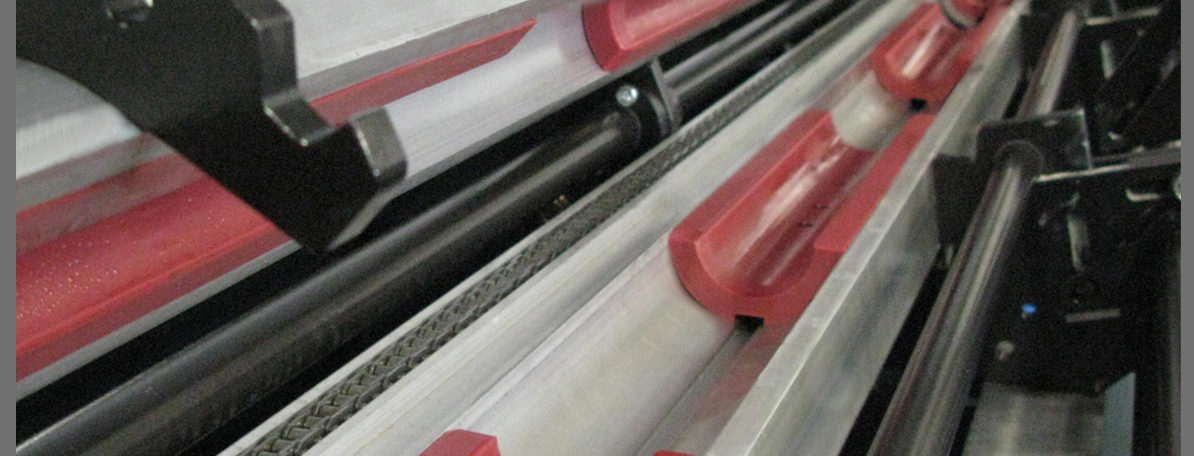In some cases a part begins as raw bar stock and the surface produced by the turning machine will be the final finish. In other situations the part moves on to additional machining processes that may refine the surface finish. Or the bar stock may be chromed or otherwise pre-finished before the turning operation begins.
With increased pressure on productivity and in these days of lean manufacturing, no one wants to add steps to the process because the surface finish was marred during the turning operation. However, what some manufacturers overlook is that the fate of a part’s surface finish rests not only with the turning machine, itself, but also with the bar stock loading and support system. In fact, the bar feeding system is critical to the surface finish outcome by enabling the turning machine to create the desired finish and/or by protecting the existing finish.
With these facts in mind, here are a few tips to help you make sure your bar feeding system isn’t causing you surface finish problems:
No “Good” Vibrations
Perhaps the most powerful role that a good bar feeding system plays in protecting a part’s surface finish is that of eliminating harmful vibrations caused by bar stock rotating at today’s increasingly higher speeds. If this vibration is not controlled, it can be transmitted through the spindle, through the part and into the cutting area, where it will affect the precision of the cut and degrade the surface finish. Although containing vibration seems simple and obvious, it’s actually a complex matter that involves a number of issues:
- Hydrodynamics: The hydrodynamic principle of bar feeding pioneered by LNS, uses oil to evenly support the bar stock which greatly reduces vibration. This also means that, within the bar feed chamber, the bar stock rotates without touching any solid surfaces, thus eliminating the danger of marring the bar’s surface. Naturally, the bar stock and the oil in the bar feed must be kept free of grit, metal shavings or any other debris that could be churned up as the bar rotates and damage the surface.
- Guiding Channels: There are two important considerations regarding guide channels in bar feeders. First, using the correct size allows the hydrodynamic principle to work most effectively to reduce vibration. You should choose a bar feed that is designed for quick and easy changeovers from one guide channel to another, rather than try to run too wide a range of bar stock diameters within one channel. Second, the guiding channels should be made of a non-marring material such as polyurethane, not steel or plastic with steel inserts that may scratch workpiece surfaces.
- Front Stabilizers: No matter how well a bar feeder supports a twelve-foot length of bar stock, there is likely to be a small amount of vibration that remains. A front stabilizer built into the bar feeder applies a hydrostatic “fix” for this remaining vibration by trapping the bar in a clamp-like device. Naturally, this clamping area must have non-marring surfaces, such as polyurethane, to protect the workpiece.
- Spindle Liners: These should always be one piece and specifically designed for the bar feeder. Spindle liners are sometimes created on site by putting a series of smaller pieces together. This practice may produce misaligned joints that will scar bar stock as it feeds through. In some applications, such as cutting chromed bar stock, LNS treats the inside of the spindle liner with Dyna-Blue (ferritic nitrocarburizing) which is a hardness process that gives the liner an extremely low coefficient of friction to further protect the workpiece surface.
- Chucks: Although the bar feeder may eliminate vibrations through hydrodynamics and by use of a front stabilizer, an improperly sized or loose chuck will allow uneven bar stock rotation to create new vibrations and mechanical damage to the part surface. Therefore it is imperative that the chuck properly holds the workpiece.
- Unloading The Part: Once the turning machine has completed its cycle, the workpiece must be removed without harming the surface finish. In some cases robots or other automated picking devices may be able to remove the workpiece successfully. Another option is a vacuum unloader, such as the LNS Blaze Air. This automatic unloader vacuums parts out of the turning machine spindle and onto a nylon-covered tray. For materials such as chromed bar stock, the internal components of the Blaze Air that touch the part are treated with Dyna-Blue so the workpiece surfaces are protected from marring.
By taking these issues into consideration when you select and use a bar feeder, you’ll be sure to protect the surface finish of the parts you make without slowing down your production or inhibiting productivity.

